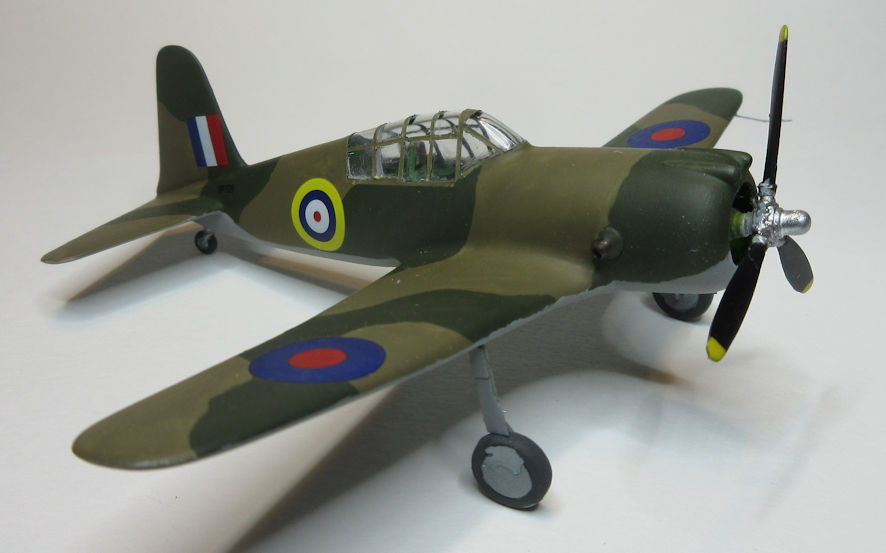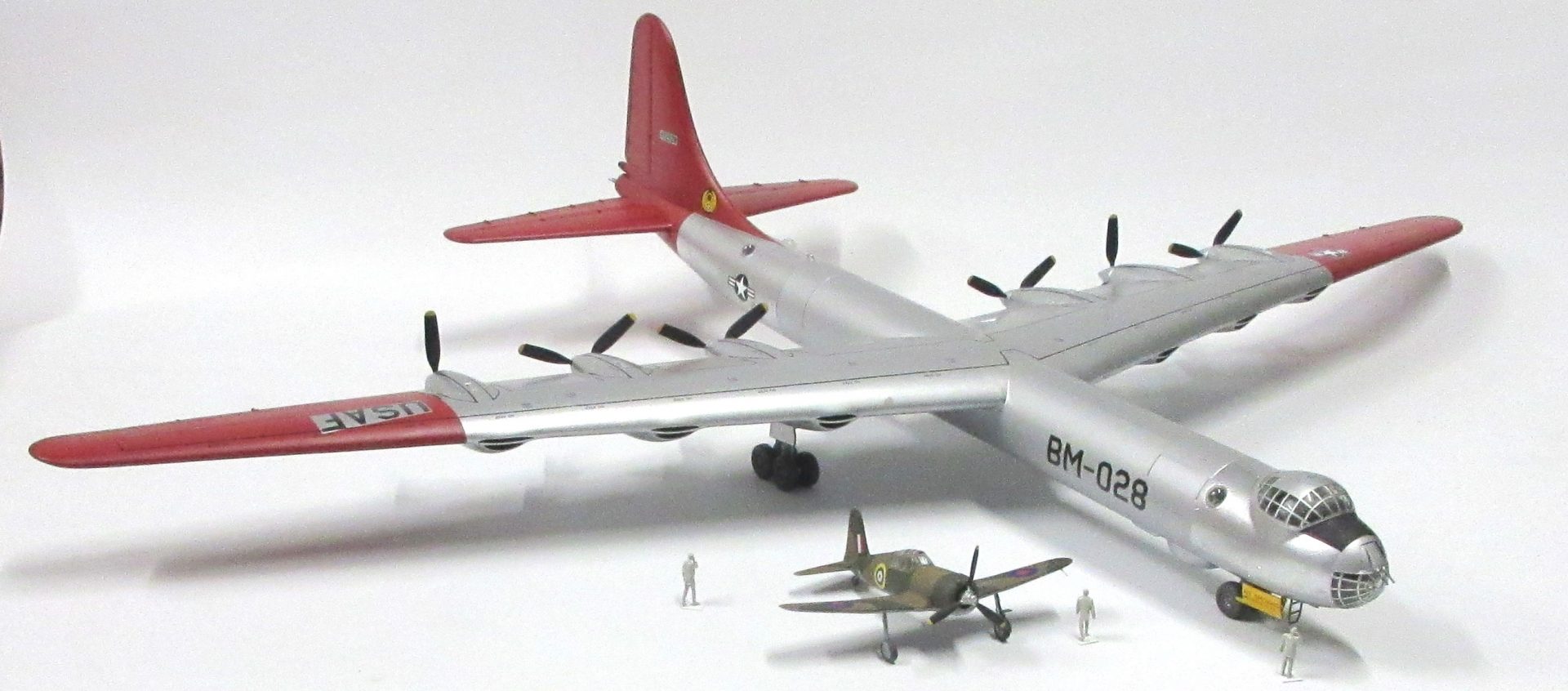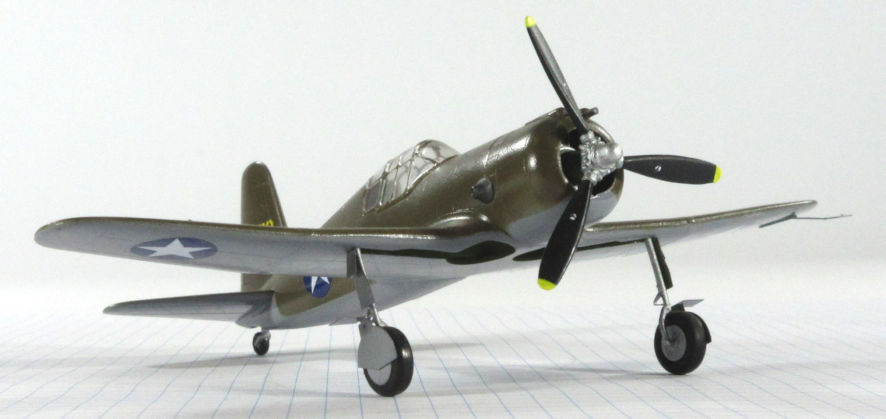Convair Aircraft
Vultee Vanguard – Consolidated LB30 – Convair B-36

Here’s a little aviation history for those who are so inclined. In 1943 two American aviation companies, Consolidated Aircraft and Vultee Aircraft merged to create the Consolidated Vultee Aircraft Corporation, which soon became known simply as Convair. Consolidated had been created in 1923 when two small and failing companies were taken over, it was well known for its flying boats before the war and for its Catalina flying boat and Liberator bomber during World War II. The Vultee company came about as the result of the amalgamation of several aviation interests and was a subsidiary of a larger company until it was reogranzied as an independent company in 1939. It was not as successful during the war with designs that included the Vengeance dive bomber and Vanguard fighter.
The creation of Convair created one of the largest United States corporations, ranked fourth by the value of its wartime contracts and larger than Douglas, Boeing or Lockheed. In 1953 Convair was wholly acquired by the General Dynamics Corporation but operated as the Convair Division so most of its aircraft, including the F-102, F-106, B-36 and B-58 were all called Convairs. Only later was that name replaced by the name General Dynamics although the F-111 and F-16 were designed by the same teams that produced the earlier Convair designs. Between 1992 and 1994 General Dynamics sold off its aerospace assets to other companies including Lockheed.
So let’s look at three aircraft in the museum made by Vultee, Consolidated and Convair. General Dynamics will come later.
Vultee Vanguard in 1/72 by AZ Model
The Vultee Vanguard was the fighter version that was part of a design project to produce four different aircraft types from the same wings and rear fuselage. A total of 146 were made, after Sweden placed an order for 144 Vanguards. However, after America joined the war an embargo was placed on sending them there so some were taken into the US air force as P-66s and used mainly for training. One hundred were offered to the British as trainers but, after testing one, the offer was declined. A lot made their way to China where they were used against the Japanese until they were replaced by P-40s in 1943. In other words, not a very successful fighter.
 Despite its failings in real life the Vanguard was an attractive little aircraft, so it’s probably not surprising that both Steve and I made models of it. We made the two different boxings offered by AZ for US and British colours. There have been a few kits of this aircraft of which the best are probably the AZ and Sword kits. This is because the AZ kit is a reboxing of the Sword kit. I wrote a Workbench Note of my experience with this kit which does not sing its praises, but reviews on the Fine Scale Modeller and Internet Modeller, recommend it. However, Dora Wings are set to publish their kit of the Vanguard in 2023 so it will be interesting to see what that is like.
Despite its failings in real life the Vanguard was an attractive little aircraft, so it’s probably not surprising that both Steve and I made models of it. We made the two different boxings offered by AZ for US and British colours. There have been a few kits of this aircraft of which the best are probably the AZ and Sword kits. This is because the AZ kit is a reboxing of the Sword kit. I wrote a Workbench Note of my experience with this kit which does not sing its praises, but reviews on the Fine Scale Modeller and Internet Modeller, recommend it. However, Dora Wings are set to publish their kit of the Vanguard in 2023 so it will be interesting to see what that is like.
Consolidated LB30 converted from Minicraft 1/144 kit
The Colsolidated LB30 was the first production version of the famous B-24 bomber and 165 of them were manufactured. It was ordered to British specifications and lacked the turbosupercharger of following B-24s so its performance was not so good and it was quickly replaced in operational service. However, LB30s were useful for carrying passengers and freight and gave good service during the war in those roles. Eventually four LB30s found their way to flying with Qantas during the 1940s.
There is no kit of the LB30 in any scale so this model had to be made by converting a kit of the B-24. There is only one kit available of the B-24, it was first released by Crown in 1975 and the version published by Minicraft in 2018 is virtually the same kit. It was dreadful then and remains so. ( Reviews of this kit on the Modelling Madness and Cybermodeller websites manage not to say anything negative about these kits through some very nifty footwork.) Conversion to the LB30 might be the best way to make the Minicraft kit because it means leaving out all the turrets, which are the worst feature of the kit. However, it also involves replacing the broad engine nacelles of the kit with the engines of round radial engines taken from another kit and that is not so easy. The decals for this model came from Hawkeye and its instructions give a good indication on how to reshape the nose and tail.
Convair B-36D in 1/144 by Hobbycraft
The Convair B-36 is one of the largest aircraft ever built. It could fly very long ranges and deliver atomic weapons to almost anywhere on the face of the world. It was the United States main nuclear deterrent from when it entered service in 1948 until 1955 when the B-52 began entering service with Strategic Air Command. Because of its deterrence role they called it the ‘Peacemaker’. Development began in 1941 with the intention of creating a bomber that could reach targets in Europe and Asia from the North American continent but the prototype did not make its first flight in 1946, Eventually 384 were built.
There are two kits available of this aircraft in 1/144, the Hobbycraft kit first published in 2002 and the Roden kit first published in 2020. When I made this model the Roden kit did not yet exist and I was pleasantly surprised with the quality of the Hobbycraft kit, given that kit maker’s generally poor reputation. Fine Scale Modeler agrees. I’ve written a Workbench Note about my experience with this kit that you can read here. I read hints that there may be some accuracy problems with the Hobbycraft kit that are not present in the Roden kit but this model looks like a big brutal B-36 to me, and that is the main thing.
PS. If you think making a model of the B-36 in 1/144 scale is a big lump, try making the Monogram 1/72 kit of this aircraft. That is BIG!



